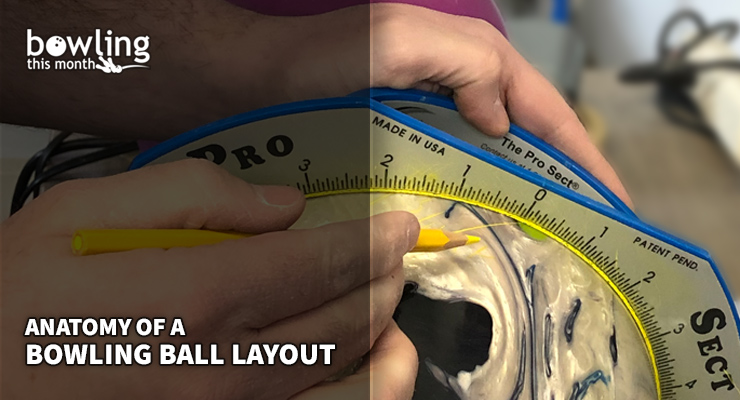Article Contents
- 1. The two popular layout systems
- 2. Understanding the systems
- 2.1. Pin-to-PAP distance
- 2.2. VAL angle/pin buffer
- 2.3. Core angle/PSA buffer
- 3. What it all means
- 4. A note on advanced layouts
- 5. Final thoughts
Note: This article is only available to Bowling This Month subscribers.
Trying to wrap your head around bowling ball layouts is like trying to wrap your head around the universe. Without highly specific training, it’s nearly an impossible thing to do. In sticking with our KISS acronym from last time, let’s try to demystify this area of bowling, while still keeping it as simple as possible.
The goal here is not to make you a ball driller. The goal instead is to give you a better understanding of the intricacies of layouts. In my last article, we discussed how to figure out what works best for you without having to understand all of the details. In this article, we will try to dive a little deeper. We’ll start by discussing the common traits of the two most popular layout systems, and then we’ll dig into each one’s methods.
Before we begin, remember that coverstock and surface still account for more than 75% of all ball reaction. A resin bowling ball with no core will hook more than a polyester ball with the strongest core and layout. The surface is always the most important factor to consider when manipulating ball reaction, and that includes maintenance to the surface. Layouts are simply a fine-tuning tool. There is a reason the best bowlers in the world mostly stick to a couple different layouts.
The two popular layout systems
There are two very common and widely-used methods of laying out a bowling ball. It doesn’t matter which method your pro shop operator prefers, as the result will be almost exactly the same. Both methods help to manipulate the core’s orientation by using the markings/indicators on the cover that we discussed last time: the pin, the CG, and the mass bias marker (which is also sometimes called the “preferred spin axis,” or PSA).
The core’s orientation with respect to the PAP will affect its flare potential. Flare potential controls how much fresh surface the ball encounters as it travels down the lane, influencing how much it hooks. If you don’t know what flare is, just look at the oil rings on your bowling ball after a ...
Already a premium member? Click here to log in.


 (Only
(Only 